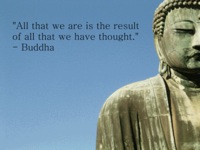I am an Apple devotee. I have bought into the culture hook line and sinker. I love all things Apple. I own an iPhone, an iPad, an Ipod, and an Apple TV. Surprisingly I do not own a Mac but only because of the compatibility issues there are with it, for me it is easier to use a regular PC. When I learned that Apple was coming out with a watch I just knew that it would be the newest member in my Apple family. That is, until the product launched and I was inundated with the overwhelming amount of choices I would need to make just to own one. There are three collection to choose from. Easy it seems at glance but that is just the tip of the iceberg. There are 38 models to choose from $549 to $17,000! Since the product was new I could make two choices. I could make an expedient decision on which Apple Watch to buy or I could make a reflective decision once it had been out for a while and I could do more research. Hoch & Kunreuther (2001) wrote “Patience and expediency are two different approaches to decision making. At the risk of oversimplification, we characterize the former as Eastern and the latter as Western” (p. 105). “The Eastern approach is reflective, taking time to consider carefully, while the Western approach focuses on deciding and acting quickly” (Hoch & Kunreuther,2001, p. 106). Fortunately for me, I opted for the Eastern approach. Since this was a brand new product I decided it was best to wait before I decided to buy. This allowed me to read multiple reviews from such sources as CNET, Engadget, and Mashable. In the end, I decided against buying an Apple Watch all together. This initial production does not have a very good battery life (must be charged daily), had a limited app ecosystem, and was expensive. Just like the first iPhone. I have decided to wait a few years before I commit to one.
In the video “How to make
choosing easier”, Sheena Iyengar discussed how choice overload affects our
decision making. Through research,
Iyengar discovered that choice overload reduces engagement, the quality of our
decision making, and our satisfaction with the choice we have made (Iyengar,
2011). Just today, I needed to run to
CVS to buy a new razor. I typically buy
my razors from Target. I know the exact
type I want and the choice is easy. I
walked into CVS and they didn’t offer the razor I normally buy so I had a
choice to make. Go out of my way to
Target (about 30 minutes away) or pick a new razor. I went with the latter. Now came the hard part. There were about ten different brands/variations
of razors to choose from. There were too
many choices. I finally picked one,
headed home and shaved. I was
disappointed from the moment I opened the package. I did not like the way the handle felt in my
hand. I also wound up nicking
myself. I made what turned out to be a
poor decision and in turn I was not happy with my purchase.
Iyengar identified four
methodologies to help us improve our decision making experiences. The first is that less is more. Why have 38 different Apple Watch models to
choose from when ten would do? The next
methodology is to concretize or make our decisions specific. Do I even need a watch? Categorizing was the next methodology that we
can use to make our decisions easier. Am
I going to use this watch to track my fitness or as a fashion accessory? The final methodology explored was the condition
of complexity (Iyengar, 2011). Watches
historically have served one purpose. To
tell time. What this watch was
introducing was a new way for us to manage our lives. Notifications, physical activities, maps,
emails, texts, all on our wrists. But
isn’t that what our phones do?
Hoch & Kunreuther (2001)
wrote “Most decisions have three stages: (1) variable identification, (2)
variable valuation, (3) information integration into an overall evaluation” (p.
100). I relied on my intuition as well
as expert testimonials in deciding whether or not the Apple Watch was for
me. I could have used this watch as a
tool to remind myself to get milk on the way home or to schedule my
meetings. I could have used it to
receive my latest Facebook updates or to check the weather. Or, I could have used it to check the time
(but who would use it for that?). But as
I mentioned earlier, I can do all of that on my phone. Smith (2015) wrote “After two weeks of
wearing the Watch, nothing has changed. I wear it, but I'm not gaining anything
from the experience. My phone is typically nearby. Perhaps I'm just not a
smartwatch kind of guy. I like to wear a watch, but when it's the Apple Watch,
it's not giving me enough bang for my buck” (para. 9). I am happy with the decision I made. I think that the Apple Watch has room for
improvement. I may consider a future
version if they make it more affordable, user friendly, and unintimidating to
choose from. After all, I know that I
will be a lifelong customer. Fortunately
for me, in this instance, I choose the Eastern philosophy of reflective
decision making and didn’t let my emotions spend $600 without having a big
picture view of what the watch represented.
Hoch, S. J., & Kunreuther, H.
C. (2005). Wharton on making decisions.
Hoboken, NJ: John Wiley & Sons Inc.
Iyengar, S. (2011). How to make
choosing easier. Retrieved from http://www.ted.com/talks/sheena_iyengar_choosing_what_to_choose
Smith, M. (2015). I regret buying
an Apple Watch (and I knew I would). Retrieved from http://www.engadget.com/2015/05/13/apple-watch-buyers-remorse/



No comments:
Post a Comment